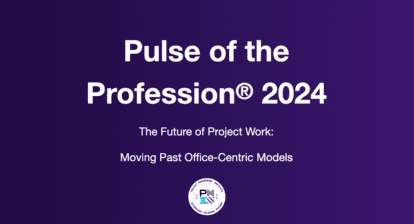This year organizations are picking up the pace to leverage rapid developments in technology which will enable them to be more productive and more competitive. To ensure their success, requirements management and development (RMD), or business analysis, is a critical discipline that cannot be overlooked in their initiatives and programs. RMD is the process of staying on top of the features, functions, or capabilities a given project will encompass. The job requires gathering requirements, analyzing them, prioritizing them, and communicating their progress — or lack thereof — to users and others involved in the project
This should be the year that organizations take to heart that the impact of RMD goes beyond any individual project. Keeping an eye on the following trends will provide a roadmap of what’s ahead in RMD, how it could impact your organization, and the actions you can expect to take as a result.
1. Business Architecture Will be the Primary Focus of Business Analysis
Organizations will strive to remain competitive, increase efficiencies, and improve the quality of their goods and services in order to better appeal to today’s financially sensitive marketplace. To optimize and facilitate these efforts, RMD will place a primary focus on business architecture. Organizations will need the critical thinking ability and specialized skills of the business analyst to examine the complex, inner workings of the organization. The business analyst’s vantage point won’t be isolated to discrete view points, but will take an enterprise-wide perspective to examine organizational policies, procedures, business rules, and processes.
2. Business Analysis Will Guide the Surge in Cloud Computing
2010 was the proving ground for cloud computing as organizations attempted to assess its value. Though a small percentage of organizations took to the cloud, in 2011 there will be a significant increase in the implementation of cloud-based computing solutions as organizations realize that the benefits of lower cost of ownership outweigh the uncertainties they may have around access and security. Global market intelligence firm IDC predicts spending on IT cloud services in 2011 will be 30 percent higher than last year. This will represent a spending rate five times higher than that for the rest of the IT industry.
Organizations will depend on RMD for the business architecture perspective to provide needed insights that will help ensure a smooth transition to the cloud. As IT and business people in the organization undertake this huge endeavor, business analysts will play an important role in determining who will have access to the network and how, among other policy concerns.
3. Requirements Management and Development Will Be Sought Out to Deliver Smart Business Perspective
As organizations push hard to improve operational efficiencies, RMD will lead the reassessment and reevaluation of performance and processes. A structured, disciplined, yet flexible approach to meticulous business analysis will ensure organizations realize the full benefits of their key initiatives this year and beyond. Particularly with the rapid development of cloud computing, organizations will need a business analyst perspective to ensure they get it right.
4. BPMN Will Solidify Its Reputation as the Industry Standard
Business process modeling notation (BPMN) is a structured, disciplined approach that will continue to earn recognition and stature as the industry standard that organizations use to model their business architecture. The syntax and language of BPMN will be appreciated for its clarity by both technical and business stakeholders, making it an essential for the business analyst’s toolkit.
5. Agile Success Will Go to Those Who Break with Tradition
The struggle will continue between the roles that project managers and business analysts play in Agile development approaches as their use — especially Scrum — continues to explode. Though Agile has proven its value, organizations will be off the mark unless they’re willing to dismiss traditional project management/business analyst values and delineations. Those that scrap a hierarchal pecking order and acknowledge the skill sets of both business analysts and project managers will realize the greatest success.
6. Business Analysts Will Be Integral Change Agents To Avoid Troubled Projects
Executives will rely on business analysts and their enterprise-wide vantage point to better understand the impact of change on the organization and help mitigate any negative results from change. Leveraging the business analyst’s expertise in the business rules, policies, and processes will enable organizations to grasp the magnitude of change as it progresses through the enterprise.
RMD will be particularly useful for articulating the as-is and future states, and assessing and evaluating resources and risks to the organization. Business analysts who don’t focus on the change management process and managers who ignore RMD insights will continue to be plagued by troubled projects, lack of acceptance, and lack of integration; even more so as they adopt cloud computing technology.
7. Resurgence of Centers of Excellence
Many organizations are taking the respite provided by a slightly improved economic outlook to focus on greater internal effectiveness. As they acknowledge the indispensible role of RMD in improving processes and efficiencies to enhance performance, greater support will be devoted to the discipline. We’ll see a resurgence of centers of excellence and the evolution of communities of practice in many organizations that will also result in others reconsidering their own RMD support structure.
8. Requirements Management and Development Will Play a Key Role in Regaining Market Share
Many organizations experienced a loss of market share over the last three years as they saw their customers spend less and spend it elsewhere. This year organizations have high expectations for creating new and greater efficiencies to drive their ability to reclaim market share. To accelerate their efforts, organizations will look to RMD to chart the course for deconstructing and reconstituting the organization — through process modeling, data modeling, measurement, and other business analysis techniques.
9. Requirements Management and Development Will Continue To Struggle To Define Itself
The role of business analysis will continue to gain well-deserved recognition and acceptance as RMD fosters greater efficiencies and processes across the organization, and demonstrates its expanding importance in new frameworks such as Agile and cloud computing. However, the still-maturing RMD role will continue to grapple with its own definition as the improvements and innovation it drives enable other new insights and voices in the organization. RMD will experience more growing pains and continue to try to find its place at the table until organizations develop a mature, stable business analysis environment over the next five to 10 years.
10. Requirements Management and Development Will Require More Balanced Competencies
The reputation of RMD professionals for soft skills such as elicitation and communication, while important, has overshadowed their capacity for complex technical skills. Business analysts will need to step up their game with more technical skills as they operate in the realm of CIOs and directors of PMOs who traditionally are heavily entrenched in an IT/project management mindset. Although communication will still be important, its documentation in models will be as well. RMD will have an increased focus on graphical modeling, cost estimates, risk analysis, and other measurements that prove the quantifiable value of business analysis to the organization.
Steady On Through 2011 with Business Analysis
As organizations observe and experience these RMD trends in 2011, they’ll benefit from the unique focus, skill sets, and perspective of RMD to fully leverage opportunities and guide their way. For their part, business analysts who can bring their soft and core technical skills into better alignment will provide a sure and steady approach to successfully serving their organization’s objectives. Demonstrating the value of business analysis through quantifiable results will benefit not only the organization, but also the RMD discipline and the business analyst professional who executes it.
This article first appeared in ESI International’s monthly newsletter, Horizons. Reprinted with permission. ESI International, Inc. 2011.






